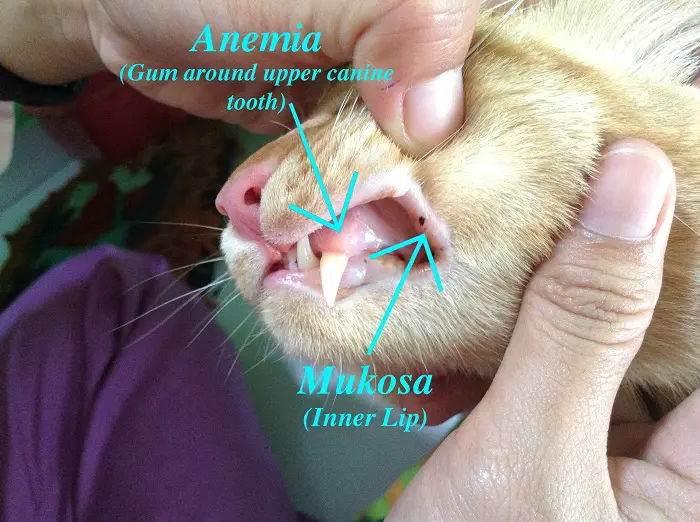Cat is a lovely pet animal liked by all. Cat gets close to a human companion and makes a good relationship. Anemia in cats is one of the common diseases that may result from various causes. In my article, I shall highlight various aspects of feline anemia. Please continue the reading.
What is Anemia in Cats?
Anemia in cats is the term that denotes the reduced number of red blood cells, hemoglobin, or both. Determining packed cell volume (PCV), also called hematocrit value, is the easiest way to determine anemia. Anemia is a severe health condition caused by underlying health problems in cats that need immediate treatment.
Causes of Feline Anemia
Anemia is the decreased number of RBCs and hemoglobin due to loss, insufficient production, or excessive destruction rather than production.
- Acute or sudden loss of blood due to injury.
- Intestinal parasitic infection.
- Viral (Feline Leukemia Virus, FIV) or bacterial infection (Mycoplasma haemofelis).
- Cancer.
- Renal failure.
- Immune system malfunction.
- Ingestion of toxins.
- Metabolic disorders.
- Genetic diseases.
- Zinc or rat poisoning.
Types of Anemia in Cats
The most common anemia types are:
- Regenerative Anemia. Regenerative Anemia, mostly in young cats. The bone marrow typically responds to sudden blood loss and works hard. The leading causes of regenerative Anemia are injury, parasitic infection, and cancer.
- Non-regenerative Anemia. A non-regenerative anemia is mainly seen in older cats. The bone marrow is unable to meet the demand or loss of RBCs. The primary cause of non-regenerative Anemia is renal failure. The kidney produces a hormone that acts on the bone marrow to produce RBC.
- Auto-immune Hemolytic Anemia (AIHA). AIHA is typically regenerative Anemia. The bone marrow produces the RBCs, and the body’s immune system destroys them. The condition is also called Immune-mediated Hemolytic Anemia (IMHA).
What are the symptoms of an anemic cat?
The clinical signs and symptoms will depend upon the severity of the anemia, its causes, and its duration. The typical clinical signs are as follows:
- Lack of appetite.
- Lethargy or weakness.
- Rapid breath.
- Short duration breathing or panting.
- Pale mucous membrane.
- Tachycardia (increased heart rate).
- Jaundice (yellow skin, gum, mucous membrane)
Diagnosis of Anemia in Cats
The exact diagnosis of feline anemia can be performed in the following ways:
- Typical clinical signs.
- History of injury, bleeding, trauma, or infectious diseases.
- Complete Blood Count (CBC).
- Determination of PCV and Hematocrit value.
- RBC count.
- Biopsy of bone marrow.
- Biochemical analysis of urine for hormones.
- Examination of feces for internal parasites.
Treatment for Feline Anemia
The treatment strategy will mainly depend on the underlying causes. The standard treatment procedures are:
- Treatment of underlying causes.
- Blood transfusion in severe cases.
- You can give corticosteroids.
Prevention of Anemia in Cats
The disease can be prevented by taking the following measures:
- Maintain a healthy life for your cats.
- Give a balanced diet.
- Regular deworming with potential anthelmintics.
- Regular vaccination against potential viral diseases.
- Reduce stress in cats.
Final Talk on Anemia in Cats
Cats are the most popular pet animals, liked by all. The lovely pet requires regular care, diet, management, and health check-ups. Anemia is a condition of the reduced number of red blood cells and hemoglobin caused by various reasons. The disease is mainly characterized by pale mucous membranes, weakness, jaundice, and anorexia.
As an owner of cats, you should know the significant clinical signs and causes of anemia. While observing any signs, please immediately contact a vet and take the necessary measures.
Please visit my website to learn more about lovely cats, breeds, diseases, nutrition, management, and vaccination.
